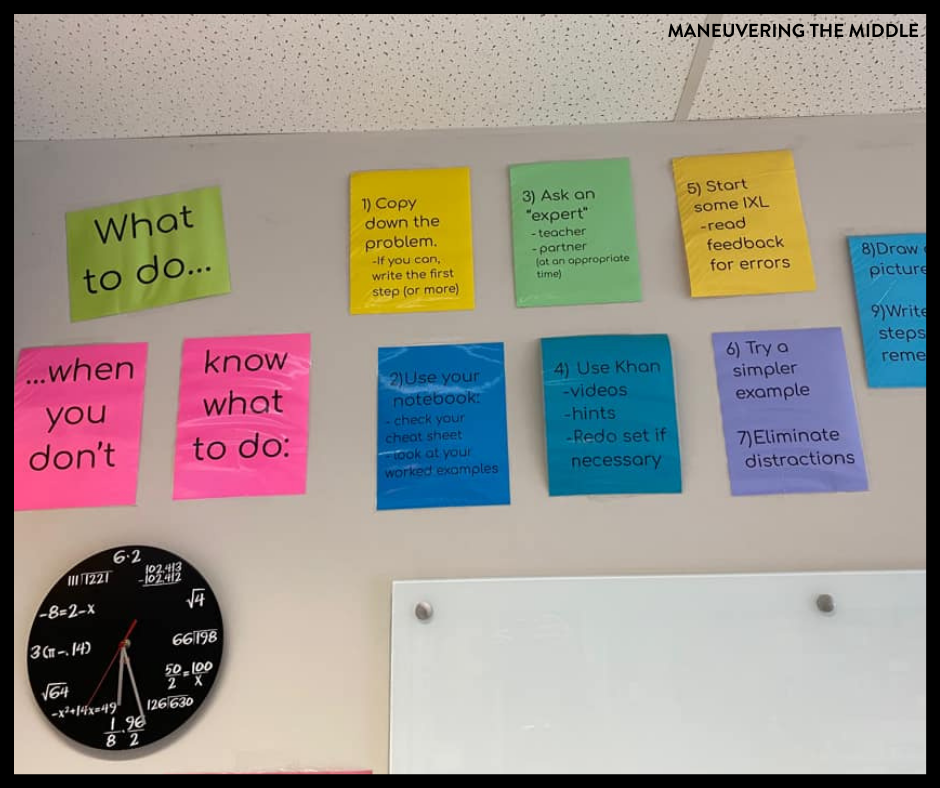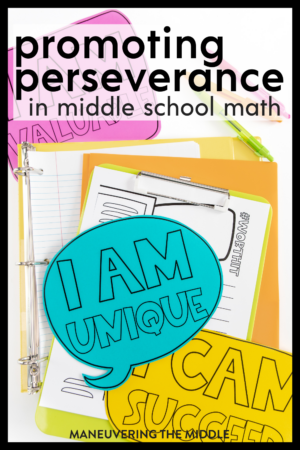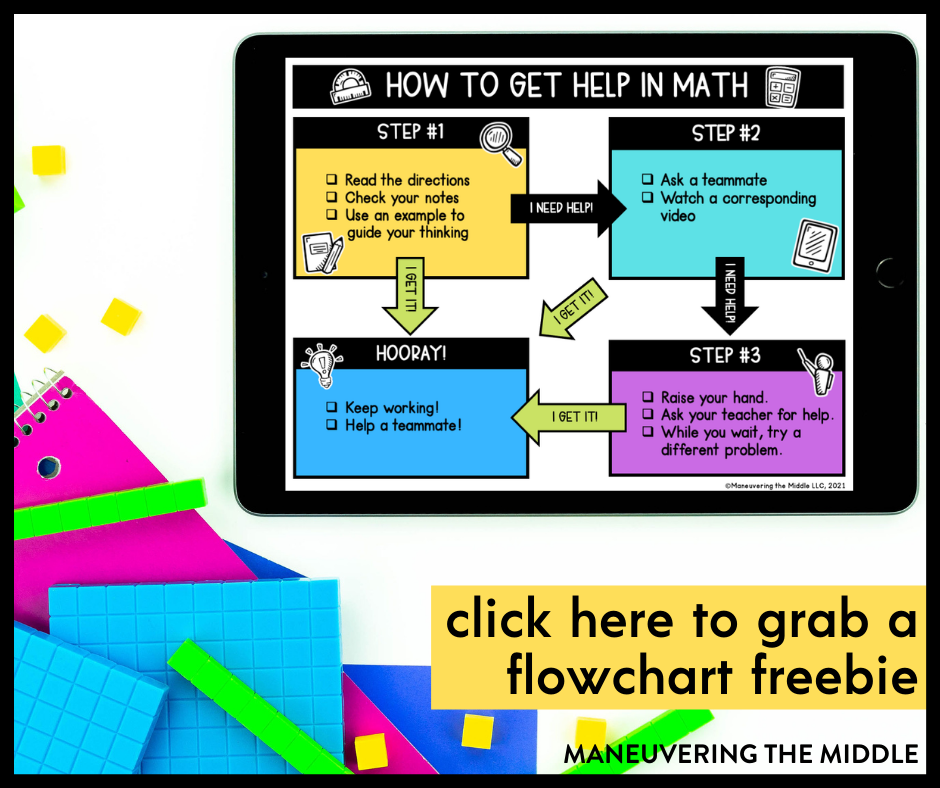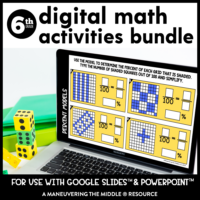Do your students give up as soon as they see a problem that requires a little more effort?
Promoting perseverance is a highly complex skill to teach! This problem recently was brought up in our Facebook group, and our amazing community of teachers delivered some spectacular solutions. While I have written on cultivating a growth mindset in your classroom in the past, these ideas were unique and deserve a place here.

Recognize When You See “It”
Students respond to praise. Students (and people) appreciate when they are recognized for their efforts. I was recognized in a meeting recently, and I spent the rest of the day beaming!
If you see any students make any type of effort, celebrate it! Consider the individual student and celebrate when they accomplish something. This might be as big as a student turning in all of their missing work or as small as a student asking a question.
“Thank you for asking that terrific question! I always appreciate it when you show your curiosity!” is more valuable than a frustrated sigh because I already answered that question – why aren’t you listening?
In the case of perseverance, celebrating a student for making an extended effort on a difficult problem might need to be scaffolded. If, as a general rule, your students won’t even attempt a problem that is difficult, you may need to celebrate as you guide them.
- Celebrate that they read the problem (because you know students often give up before even reading the problem)
- Celebrate that they looked at their notes to acquire some help
- Celebrate that they started the first step
Students need to build up that confidence, and you teacher, are their #1 cheerleader. Keep your expectations high, and celebrate as students rise to meet them!
Remember that you are teaching students to be problem solvers. The problem solving process is not a one step skill. Therefore, trying again and trying again and trying one more time is how growing our brain in math works!
Introduce a Chain of Command
You may have a few students who are paralyzed by making a mistake or will not attempt work without you beside them walking you through every step of the way. I definitely have had these students.
Introduce a chain of command, and stick to it! Your chain of command can vary – I had this handy flowchart on my tables that helped remind students of the steps. You can grab your own here.
Better yet – brainstorm with your entire class ideas of what to do when you are stuck! Kristin and her class brainstormed these ideas and she has it posted to remind her students.

A student has to make some effort in the problem before asking me for help. Even then, I would be helpful, but I wouldn’t walk them step by step through the entire problem because that is how a student becomes too dependent on their teacher. I would give them some feedback and walk away.
Connect Perseverance to Their Own Lives
No one is born a master of any skill or any task. While you may have a propensity for certain things, you have to practice to truly be good at anything! This is true for math as well!
Ask your students what they are good at – it can be anything! Video games, being a good friend, making a great sandwich, tennis, soccer, or playing the fiddle. Ask if they were good at it the very first time they tried it.
Sports is my favorite analogy because it is obvious to students that practice is necessary. If you are on the basketball team, you go to practice weekly or daily. If you play an instrument, you practice daily. Why do you go to practice? Do NBA players skip practice because they are already the best? No! Improvement is constant upkeep!
Change It Up
As I continue to explore ideas from Building Thinking Classrooms by Peter Liljedahl, I find myself fascinated with what he has observed. While I encourage you to read the entire book for more context, I thought this particular idea to be a quick hit that you can implement today.
He has researched and found that students working on vertical whiteboards demonstrate persistence, discussion, and participation more than working on any other surface. A horizontal whiteboard (or desk surface with dry erase markers) is the second best option. Apparently, the non-permanent nature of the whiteboard improves persistence.
Now there is published data that backs up what I always observed in my classroom! If you don’t have the whiteboard space for every student to use, consider rotations or a system available for students who are stuck to jump start by working at the whiteboard! Promoting perseverance can be as easy as changing the way in which students write down their work!
Other Helpful Tips:
- Make sure that the work put in front of your students is properly scaffolded. Students shouldn’t be starting with the most complex or challenging questions. Our Maneuvering the Middle student handouts and homework were designed with this in mind.
- This video is really encouraging!
- Take the focus off of the answer. Focus on the work to get there!
- You can read more ideas on developing math confidence here.
- Grab our Community Counts activity.
How do you promote perseverance in your math classroom?







Is there a link to the math mindset speak bubbles used in the visual above. I also am a Peter L groupie!! Thanks,